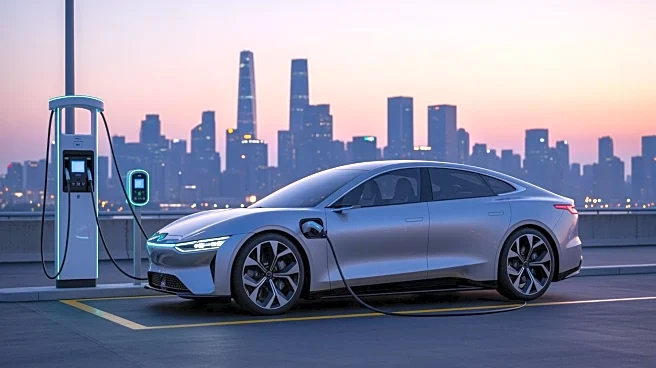What's Happening?
Audi has announced the upcoming debut of its Q9 large crossover, set for 2026. This development comes as the automotive market experiences fluctuations, with a projected decline of 3 to 6.9 percent in October. The decline is attributed to a decrease in electric
vehicle (EV) demand following the expiration of federal tax credits. The Q9 is expected to be a significant addition to Audi's lineup, catering to the growing demand for larger vehicles. This announcement aligns with broader trends in the automotive industry, where manufacturers are increasingly focusing on SUVs and crossovers to meet consumer preferences.
Why It's Important?
The introduction of the Audi Q9 is significant for the U.S. automotive market, particularly as it navigates the challenges of shifting consumer preferences and regulatory changes. The expiration of federal tax credits for EVs has impacted demand, prompting manufacturers like Audi to diversify their offerings. The Q9's debut could bolster Audi's market position by appealing to consumers seeking larger, more versatile vehicles. This move also reflects a broader industry trend towards SUVs and crossovers, which have become increasingly popular in the U.S. market. The Q9 could potentially capture a significant share of this segment, influencing Audi's sales and market strategy.
What's Next?
As Audi prepares for the Q9's debut, the company will likely focus on marketing strategies to highlight the vehicle's features and appeal to U.S. consumers. The automotive industry will be watching closely to see how the Q9 performs in a competitive market. Additionally, other manufacturers may respond by accelerating their own SUV and crossover offerings to maintain market share. The Q9's success could also influence Audi's future product development and strategic decisions, particularly in the context of evolving consumer preferences and regulatory landscapes.













